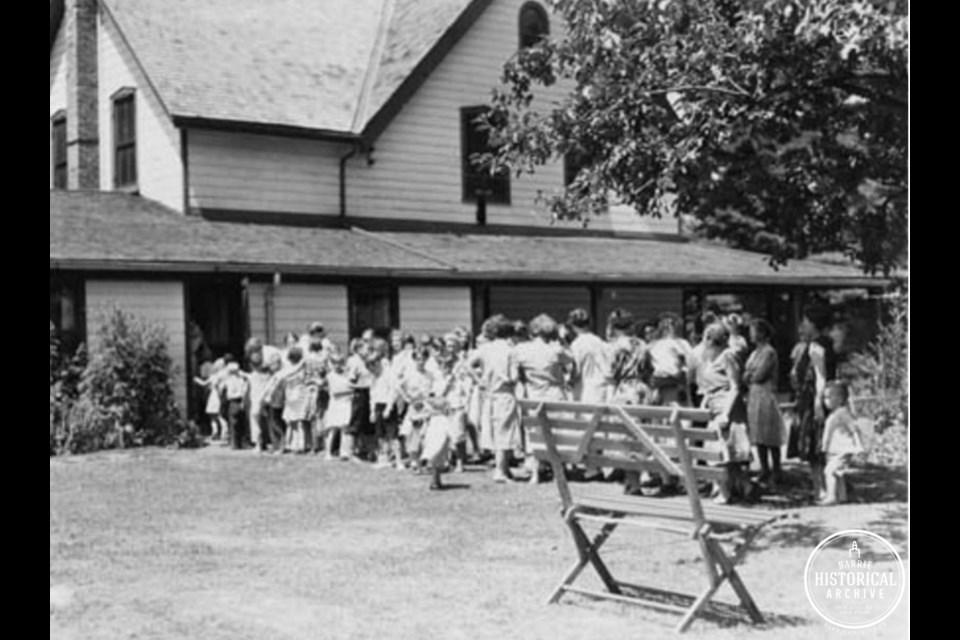There is little to see now of the glory days of the Gables estate, now a park in the Tollendale section of Barrie.
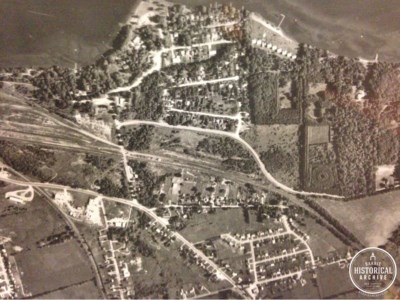 View of south side of Kempenfelt Bay, showing Minet's Point, and the Gables Estate on the right, 1970. Photo courtesy of Barrie Historical Archive.
View of south side of Kempenfelt Bay, showing Minet's Point, and the Gables Estate on the right, 1970. Photo courtesy of Barrie Historical Archive.What you will find are hiking trails through an oasis of green, and old growth Ontario forest mixed with the descendants of flowers and shrubs planted by nineteenth century gardeners. What you will see is why this 42-acre parcel of land, for many years, was so attractive to the well-heeled folks of Barrie.
Residents there have included prominent names such as Whish, Forbes, Hewitt, Ardagh, Boys and their relatives.
For many years, it was the site of summer respite for many thousands of Toronto children, who were given some time to enjoy nature at the Gables, through the Toronto Star Fresh Air Fund. The children, 100 at a time, spent two weeks enjoying hiking, swimming in Kempenfelt Bay, picnicking, playing tennis and softball, having bonfires and being very well fed.
Known mostly as the Gables, it has been called Captain Whish’s Place at times, and was once known as The Paradise when a Mr. Hunt used it as a tavern.
But who built the Gables?
William Smith Durie was born to an army surgeon and his wife at Gibraltar in 1813. He took up a military career of his own and attended the venerable Royal Military College at Sandhurst, England. His first posting was to Canada and he arrived here in 1837, but retired within one year due to bad health.
Durie’s father, now also in Canada, retired about the same time and received multiple land grants in Simcoe County for his 38 years of service. The Durie father and son were more than familiar with the beautiful, and yet unspoiled, shores of Lake Simcoe.
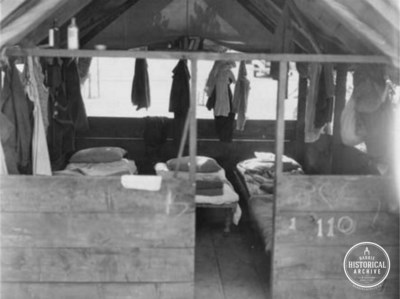 Outdoor sleeping quarters, 1915. Photo courtesy of Barrie Historical Archive.
Outdoor sleeping quarters, 1915. Photo courtesy of Barrie Historical Archive.The younger Durie had retired from his commission but not entirely from military life. While managing his father’s lands in Upper Canada, he kept busy with militia work and was eventually responsible for the formation of the Queen’s Own Rifle Battalion.
In 1860, William Durie built the large house with the green painted gables that inspired the name. He had apparently been doing quite well for himself as he purchased a schooner, valued at the princely sum of 300 pounds, in 1856 and kept it moored near the site of the soon-to-be-built Gables house.
By the 1870s, Durie was occupied largely in Toronto and so the Barrie chapter of his life has ended. I would like to follow him just a little more as the story gets more interesting. In 1880, William Durie was forced to retire at the age of 67 and given 2 years pay but no pension, but his life must have brightened some when he married 24-year-old Anna Peel two years later. He was 70.
His son, Arthur, was born in 1883, and a daughter, Helen, followed a year later. The new father passed away in Toronto in 1885, at the age of 72.
The death of the old soldier does not quite conclude the Durie tale. A strange and sad story unfolded when his son, Arthur Peel Durie, enlisted in the military at the outbreak of the Great War, following family tradition, despite his mother’s wish that her ‘poor darling bunny’ stick with his banking career.
At 35 years of age, Arthur was no child. That did not stop Anna Durie from mothering him to the extreme. Using her wealth, she and her daughter, Helen, followed Arthur to Europe and, from their hotel in England, sent him chocolates, cakes and other luxury goods. Contrary to the law, they slipped into France when Arthur was wounded in 1916, and talked their way into the hospital to visit and bring gifts.
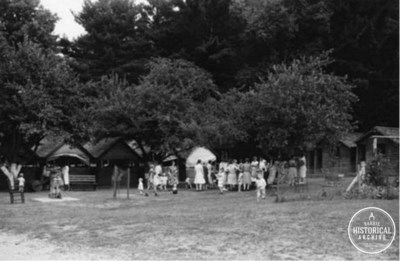 Visitors and cabins at the Gables, 1920. Photo courtesy of Barrie Historical Archive.
Visitors and cabins at the Gables, 1920. Photo courtesy of Barrie Historical Archive.Arthur refused to get ‘a special job’, as his mother had suggested, and returned to his men eventually. Anna’s worst fears were realized in late 1917 when her son was killed in action at Lens. That should conclude that story as well, but it does not.
I have visited the beautifully-kept cemeteries, looked after by the Commonwealth War Graves Commission, in the north of France, and walked through the neat rows of white stones marking the final resting places of countless fallen soldiers. In one CWGC cemetery, in Loos, France, there is a noticeable gap between gravestones. Anna Durie stole her son’s body!
Arthur had been buried in the Corkscrew Cemetery, in an area of railway tracks and mines, an area too bleak for Anna’s taste, and so she campaigned to have Arthur’s body moved to a more suitable cemetery or repatriated to Canada, which was against policy.
She continued to petition, pester and harangue every bureaucrat she could think of, from CWGC gardeners and commissioners, all the way up to Arthur Meighan, Prime Minister of Canada. When all of that failed, she hired two French men with a horse and cart, and on August 1, 1921, she and the men dug up Arthur’s remains.
The horse bolted suddenly and ran off, before they could load the cart, and the trio was forced to put Arthur back. The CWGC kept a better watch on the grave after that episode but, in 1925, Anna was back. This time, she had a better plan.
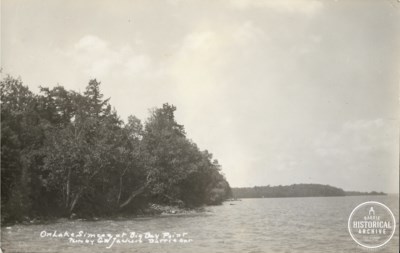 View of the south shoreline of Kempenfelt Bay from the water, 1927. Photo courtesy of Barrie Historical Archive.
View of the south shoreline of Kempenfelt Bay from the water, 1927. Photo courtesy of Barrie Historical Archive.The bodies at Corkscrew were moved to the present Loos Cemetery in 1925, and the local authorities were aware that this might present a unique opportunity for the tireless Anna Durie to attempt another caper. They made sure Arthur’s coffin was in its proper place, at Loos, by sending a rod down through the earth to confirm it.
The CWGC was shocked to find out that an ad had been seen in the ’Toronto Star’, in August of that year, stating that Arthur Durie was to be buried in St. James Cemetery, Toronto. The coffin in Loos was dug up and opened. It was empty.
Each week, the Barrie Historical Archive provides BarrieToday readers with a glimpse of the city’s past. This unique column features photos and stories from years gone by and is sure to appeal to the historian in each of us.
